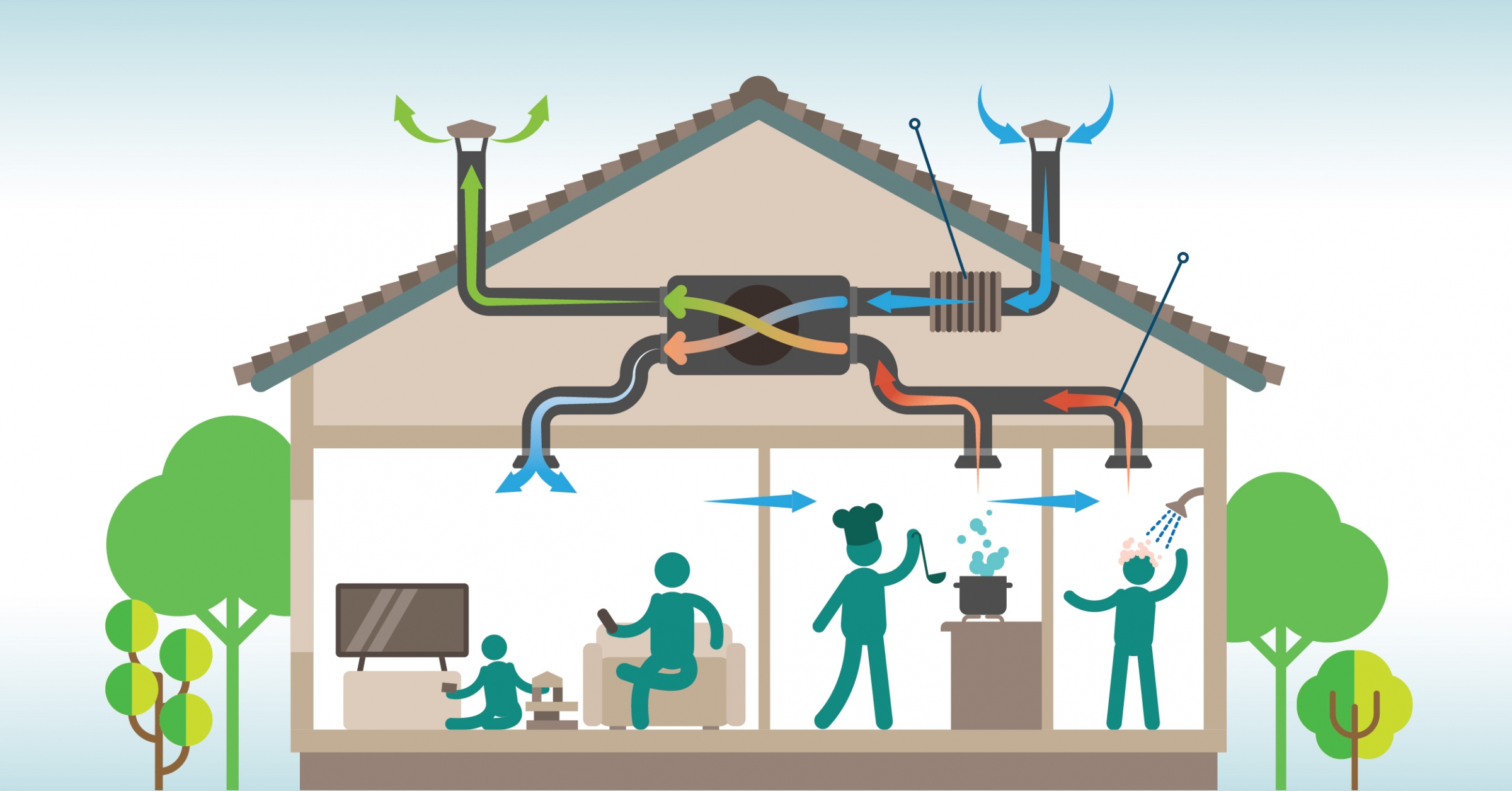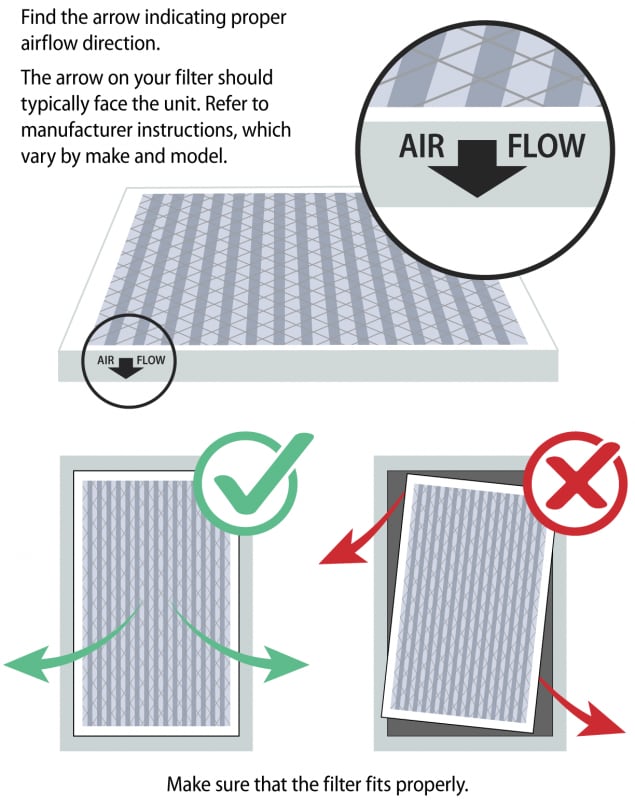How to Improve Indoor Air Quality with Home Ventilation Melbourne
Recognizing the Relevance of Home Air Flow for a Healthier Living Setting
Home air flow plays a vital role in keeping a healthy living atmosphere. It helps with the exchange of outside and interior air, which is necessary for enhancing air top quality. Without proper air flow, homes can become breeding grounds for contaminants and irritants. The consequences of poor air blood circulation can be considerable. This brings up the questions of exactly how home owners can successfully execute ventilation approaches to guard their health and wellness and health. Comprehending these approaches is imperative.

The Basics of Home Air Flow
Home ventilation offers as a vital part of interior air top quality and convenience. It involves the procedure of exchanging stagnant indoor air with fresh outdoor air, thus lowering humidity and controlling temperature. Proper air flow systems can include all-natural approaches, such as open windows and vents, along with mechanical systems, such as exhaust fans and air exchangers. Reliable home air flow aids protect against issues like interior mold development and the buildup of hazardous particles. It additionally improves total energy efficiency, as well-ventilated areas can keep comfy temperature levels with much less reliance on home heating and cooling systems. Recognizing the basics of home ventilation is essential for homeowners seeking to develop a much healthier living setting on their own and their family members.

Usual Resources of Indoor Air Pollution

Although many might not recognize it, indoor air contamination can originate from different sources within a household. Common contributors include volatile natural substances (VOCs) produced from paints, solvents, and cleansing items. Home devices, such as gas ranges and fireplaces, can launch hazardous gases like carbon monoxide and nitrogen dioxide. In addition, mold and mold thrive in moist areas, launching spores that influence air top quality. Family pet dander, allergen, and pollen can gather inside your home, more worsening contamination degrees. Smoking cigarettes inside your home creates toxic chemicals that stick around airborne. Constructing materials, consisting of asbestos and formaldehyde, can off-gas damaging compounds. Acknowledging these sources is necessary for keeping a much healthier interior environment and advertising reliable ventilation methods.
Health And Wellness Effects of Poor Ventilation
Indoor air contamination can have considerable health and wellness effects, particularly when ventilation is poor. Poor air flow can result in the buildup of unsafe pollutants, such as volatile organic compounds, mold, and particulate issue. This build-up might result in breathing problems, including asthma, allergic reactions, and persistent obstructive lung illness. People might experience symptoms like frustrations, fatigue, and irritation of the eyes, nose, and throat. At risk populaces, such as children and the senior, go to higher threat for extreme health impacts. Long-term direct exposure to poorly ventilated environments can also add to much more severe problems, including cardiovascular illness. Making certain appropriate air flow is crucial for maintaining a healthy living atmosphere and decreasing the danger of health and wellness difficulties linked with interior air pollution.
Effective Ventilation Approaches for Your Home
Correct ventilation is essential for preserving a healthy indoor environment, and implementing reliable methods can substantially enhance air quality. House owners can start by making sure that exhaust fans are installed in bathroom and kitchens to eliminate excess dampness and odors. Opening windows frequently permits fresh air to flow, particularly throughout light weather condition. In addition, using air cleansers with HEPA filters can help record air-borne contaminants. For homes with home heating and cooling down systems, keeping heating and cooling systems and transforming filters routinely is essential for peak performance. Integrating natural ventilation methods, such as cross-ventilation, can likewise enhance airflow. Sealing any kind of leaks in home windows and doors prevents unwanted drafts, which can interrupt regulated airflow, inevitably leading to enhanced interior air high quality and convenience.
Preserving Optimal Air High Quality Year-Round
To preserve ideal air high quality year-round, house owners have to take on a positive method to handling their indoor setting. Routinely keeping an eye on indoor air quality is essential; this includes monitoring for pollutants such as dirt, mold and mildew, and unpredictable organic substances (VOCs) Implementing efficient air flow systems, such as exhaust fans and air purifiers, can significantly minimize air-borne impurities. Additionally, routine upkeep of a/c systems guarantees peak efficiency and air flow. House owners ought to likewise take into consideration moisture degrees, as extreme wetness can cause mold and mildew pop over to this web-site development. Seasonal changes may demand adjustments in ventilation strategies to suit differing outside air top quality. By prioritizing these methods, homeowners can develop a much healthier living area, advertising total well-being for all owners throughout the year.
Regularly Asked Inquiries
Exactly How Can I Tell if My Home Demands Much Better Ventilation?
To figure out if a home calls for far better air flow, one need to observe indicators such as persistent humidity, mold and mildew development, moldy smells, condensation on home windows, or increased allergic reaction signs and symptoms, showing poor air movement and potentially inadequate indoor air high quality.
What Are the Signs of Poor Indoor Air Quality?

Can Houseplants Improve Indoor Air High Quality Properly?
The efficiency of houseplants in enhancing indoor air quality is disputed. While some researches suggest they can soak up contaminants and generate oxygen, their total impact might be marginal contrasted to correct air flow and air filtering systems.
Exactly how Frequently Should I Adjustment My Air Filters?
The frequency of air filter changes normally relies on use and filter type. Generally, it is advised to replace filters every 3 months, though households with allergies or pet dogs may call for more regular modifications for ideal efficiency.
Are There Any Kind Of Certain Air Flow Equipments for Allergy Sufferers?
Several ventilation systems, such as HEPA-filtered devices, effectively minimize irritants in the air. Home Ventilation Melbourne. These systems catch pollen, family pet, and dust dander, giving allergic reaction victims with a cleaner, much healthier interior atmosphere while handling air quality successfully
It promotes the exchange of exterior and indoor air, which is crucial for improving air quality. Home air flow serves as a crucial element of interior useful reference air quality and convenience. It entails the procedure of exchanging stagnant indoor air with fresh outside air, thereby decreasing moisture and controlling temperature level. Interior air contamination can have considerable health ramifications, especially when air flow is insufficient. Appropriate air flow is crucial for maintaining a healthy interior setting, and carrying out efficient strategies can significantly improve air quality.